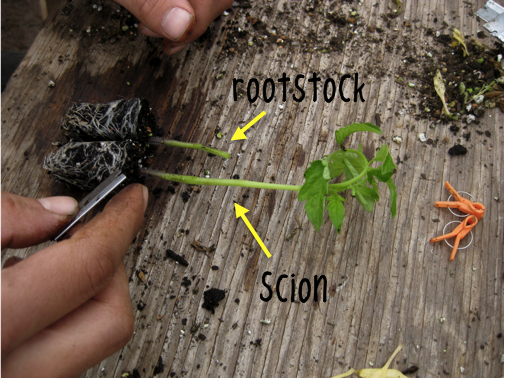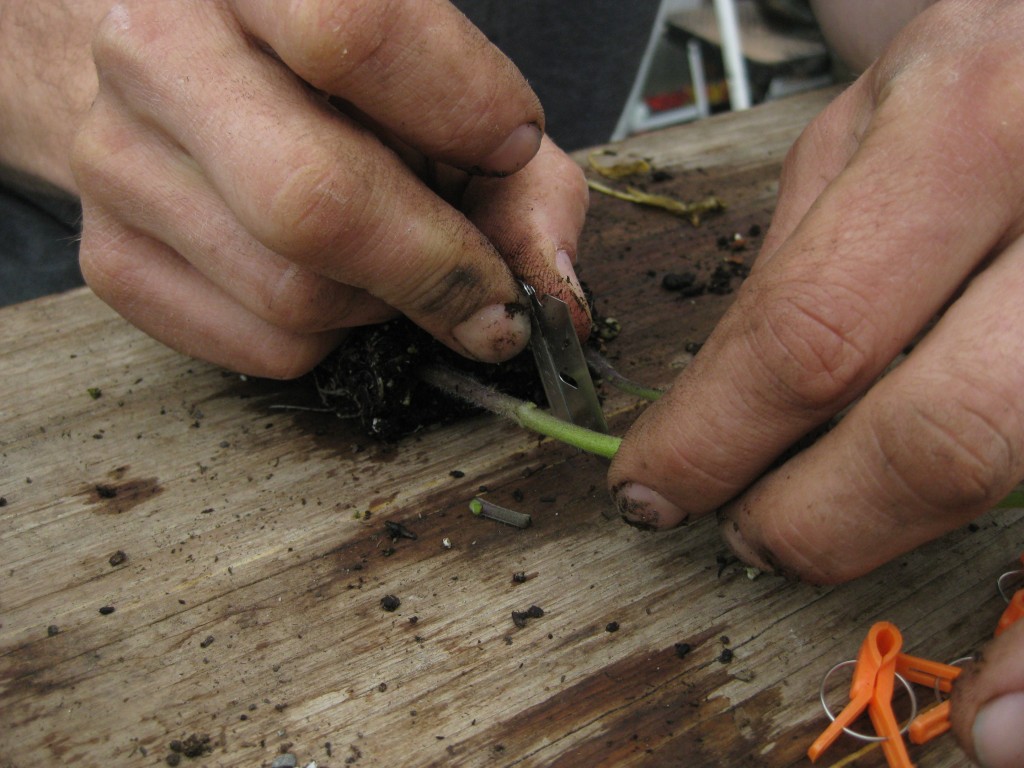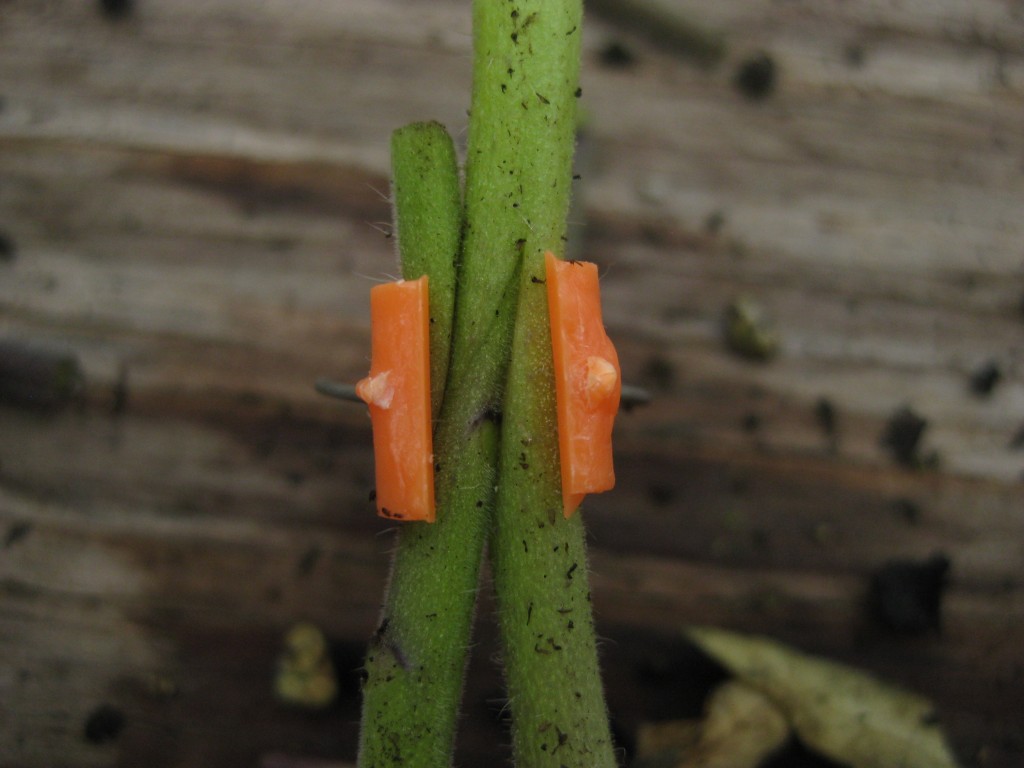17 Apr Tomato Grafting
Farmers at BGF got to try their hand at some plant “surgery” this week as our young tomato plants were lined up to go through the delicate grafting process. Grafting of woody plants, like fruit trees, has been popular for centuries but the cultivation of grafted vegetable plants is a fairly new practice, originating in the late 1920’s in Japan and Korea where they began grafting watermelon plants onto squash rootstock. (In case you are wondering, this is not genetic modification!)
Basically, we are selecting two kinds of tomato plants–one for its delicious fruits (the heirloom variety), the other for its vigor and resistance to root-born disease (the “rootstock”)–and then fusing them together through the grafting process, so that we have a plant that possesses the favorable qualities of both plants.
The top of the rootstock is cut-off, leaving only the stem and the roots. It is then grafted onto the “scion” (the plant we want to fruit).
It looks a little something like this…

The Setup

The Incision

The Graft
After this process, the plants get to hang out and heal for a week in a warm humid environment before the final incision is made and the scion’s roots are completely pulled out and the “exchange” is made.
Studies have shown that grafted tomato plants have a 50% higher yield than non-grafted tomato plants. Not a bad way to increase production, without having to put up more greenhouses.
If you want to learn more about tomato grafting and see some live action footage, check out this technical video from a Vermont tomato grower. (Warning: If caught watching this video, you will be labeled a serious farm nerd!)





Sorry, the comment form is closed at this time.